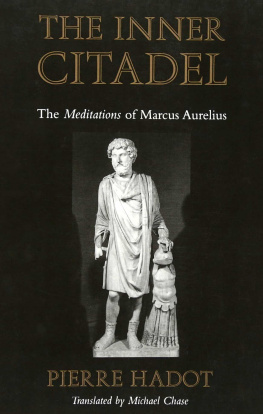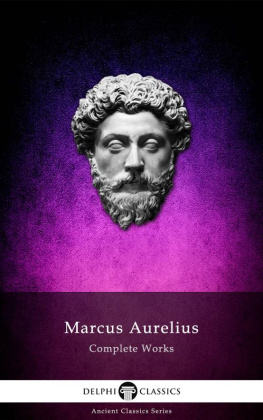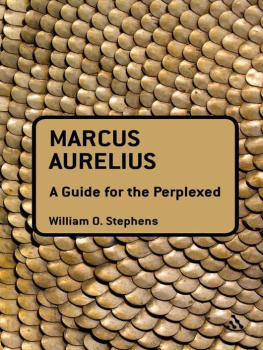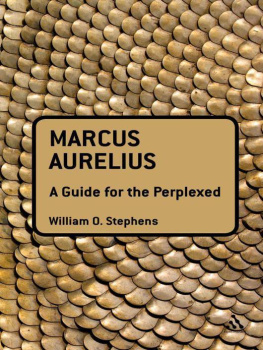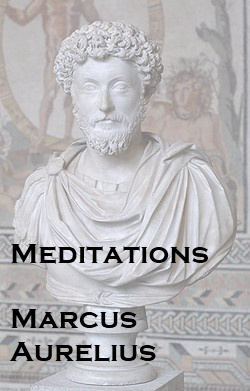Lucius Verus and the Roman Defence of the East
Lucius Verus and the Roman Defence of the East
M.C. Bishop
First published in Great Britain in 2018 by
Pen & Sword Military
An imprint of
Pen & Sword Books Ltd
47 Church Street
Barnsley
South Yorkshire
S70 2AS
Copyright M C Bishop 2018
ISBN 978 1 47384 760 6
eISBN 978 1 47384 945 7
Mobi ISBN 978 1 47384 938 9
The right of M C Bishop to be identified as Author of this work has been asserted by him in accordance with the Copyright, Designs and Patents Act 1988.
A CIP catalogue record for this book is
available from the British Library.
All rights reserved. No part of this book may be reproduced or transmitted in any form or by any means, electronic or mechanical including photocopying, recording or by any information storage and retrieval system, without permission from the Publisher in writing.
Pen & Sword Books Limited incorporates the imprints of Atlas, Archaeology, Aviation, Discovery, Family History, Fiction, History, Maritime, Military, Military Classics, Politics, Select, Transport, True Crime, Air World, Frontline Publishing, Leo Cooper, Remember When, Seaforth Publishing, The Praetorian Press, Wharncliffe Local History, Wharncliffe Transport, Wharncliffe True Crime and White Owl.
For a complete list of Pen & Sword titles please contact
PEN & SWORD BOOKS LIMITED
47 Church Street, Barnsley, South Yorkshire, S70 2AS, England
E-mail:
Website: www.pen-and-sword.co.uk
For Lucius Ceionius Commodus
a.k.a. Lucius Aelius Aurelius Commodus
a.k.a. Imperator Caesar Lucius Aurelius Verus Augustus
List of illustrations
Figure 1: Map of sites in Italy and the Balkans mentioned in the text (M.C. Bishop)
Figure 2: Sestertius of Marcus and Lucius commemorating Concordia Augustorum (M.C. Bishop)
Figure 3: Medallion depicting Marcus and Lucius on the obverse and the Dioscuri (Castor and Pollux) on the reverse (M.C. Bishop)
Figure 4: Sestertius depicting the Column of Antoninus Pius (M.C. Bishop)
Figure 5: Map of sites in the East mentioned in the text (M.C. Bishop)
Figure 6: Emboldened aureus depicting Lucius sitting on a dais and crowning Sohaemus as the new king of Armenia (M.C. Bishop)
Figure 7: Denarius commemorating Lucius victory in Armenia, depicting a personification of a defeated Armenia (M.C. Bishop)
Figure 8: Plan of the so-called Villa of Lucius Verus at Acquatraversa (M.C. Bishop)
Figure 9: Denarius depicting Lucius funeral pyre (M.C. Bishop)
Figure 10: The inscription of Lucius epitaph from Hadrians Mausoleum as recorded in Corpus Inscriptionum Latinarum
List of plates
Plate 1: A bust of Lucius as a young boy, presumably at the age of 8 when he, along with Marcus, was adopted by Antoninus Pius. From Ostia, now in the site museum. (M.C. Bishop)
Plate 2: A bust of Lucius as a youth, probably when he assumed the toga virilis in AD 145, from Tivoli and now in the Hermitage Museum. (George Shuklin)
Plate 3: A bust of Lucius, now in the Louvre (Paris). Found in the so-called Villa of Lucius Verus at Acquatraversa. (Marie-Lan Nguyen)
Plate 4: Busts of Lucius (from the Villa Mattei in Rome) and Marcus (from the House of Jason Magnus in Cyrenaica), both now in the British Museum. (M.C. Bishop)
Plate 5: Cuirassed bust of Lucius, now in the Ashmolean Museum (Oxford). Found in a tomb at Probalinthos, near Marathon (Greece), together with busts of Marcus Aurelius and Herodes Atticus, it is thought to show Verus around AD 161. (M.C. Bishop)
Plate 6: A bust of Aelius Caesar, Lucius natural father, who was adopted by Hadrian as his successor, only for him to die shortly afterwards in AD 138. Now in the Louvre. (Marie-Lan Nguyen)
Plate 7: Bust of Lucius from Bardo. One of those that resembles, rather than captures, its subject. (Gmihail)
Plate 8: Bust of Lucilla, daughter of Marcus and wife of Lucius. After Lucius death, she was involved in a conspiracy against Commodus. From Ostia, now in the site museum. (M.C. Bishop)
Plate 9: Part of the so-called Parthian Monument from Ephesus (now in Berlin), commemorating the life of the recently deceased Lucius. It shows Hadrian (right), Antoninus Pius (centre left), Marcus (left), and the young Lucius (centre right). (Carole Raddato)
Plate 10: A bust of Marcus as a young man, once again probably made at around the time of his adoption by Antoninus Pius, at which point he was 18. (Anagoria)
Plate 11: Vaulted substructures beneath the House of Tiberius on the Palatine, where Lucius and Marcus lived after they were adopted. (Rabax63)
Plate 12: The simple dedicatory inscription on the pedestal of the Column of Antoninus Pius set up in the Campus Martius in Rome. (Sailko)
Plate 13: The walls of Dura-Europos, at the point where the gypsum blocks were patched with mud brick, possibly the point of entry of Lucius army. (M.C. Bishop)
Plate 14: The central burial chamber in Hadrians Mausoleum (now pierced by an elevated metal walkway) where the ashes of Hadrian, Aelius Caesar, Antoninus Pius, Lucius, and ultimately Marcus were laid to rest. (M.C. Bishop)
Plate 15: Scene from the Parthian Monument from Ephesus (now in Berlin) showing the apotheosis of Lucius after his death. (Carole Raddato)
Plate 16: Marcus son and successor, Commodus, here portrayed in his favoured guise as Hercules. Now in the Capitoline Museums in Rome. (M.C. Bishop)
Preface
I f a modern visitor to Italy chooses to fly into Venice Marco Polo Airport, at a point just 4 km north-east of where their aircrafts tyres will ultimately kiss the runway tarmac, they pass directly over the place where Lucius Verus breathed his last. There is a particular significance in the fact that we do not know the day (probably in January or February of AD 169) when Imperator Caesar Lucius Aurelius Verus Augustus Armeniacus Medicus Parthicus Maximus, son of the divine Antoninus Pius, grandson of the divine Hadrian, great-grandson of the divine Trajan Parthicus, great-great-grandson of the divine Nerva, died at Ocriculum. He was 39 years old. He is the only Roman emperor of the second century AD for whom history has not bothered to record the date of his death. This is not just a coincidence. It was a deliberate slight, the nearest thing possible to a damnatio ad memoriae for an emperor without actually calling it such.
But why write a biography of Lucius Verus? The fact that nobody else has done it for a couple of millennia is certainly one possible reason, as is the fact that he is forever appearing in biographies of his adoptive brother, only to be dismissed as a waste of space. There is something of the underdog about this man who, during his eight-year reign as co-emperor with the far-more-famous Marcus Aurelius, brought peace to the eastern frontier in the second century AD. He had no senators killed, never attempted to seize sole power for himself, and generally did none of the many things of which other emperors are all too frequently accused. He certainly liked the good life, was fond of watching gladiatorial combat and chariot racing, and was a firm fan of pantomime (the Roman equivalent of modern ballet, albeit with a cast of one), but none of these are the sort of heinous crimes imperial biographers were fond of retelling for the benefit of their presumably shocked audiences.



